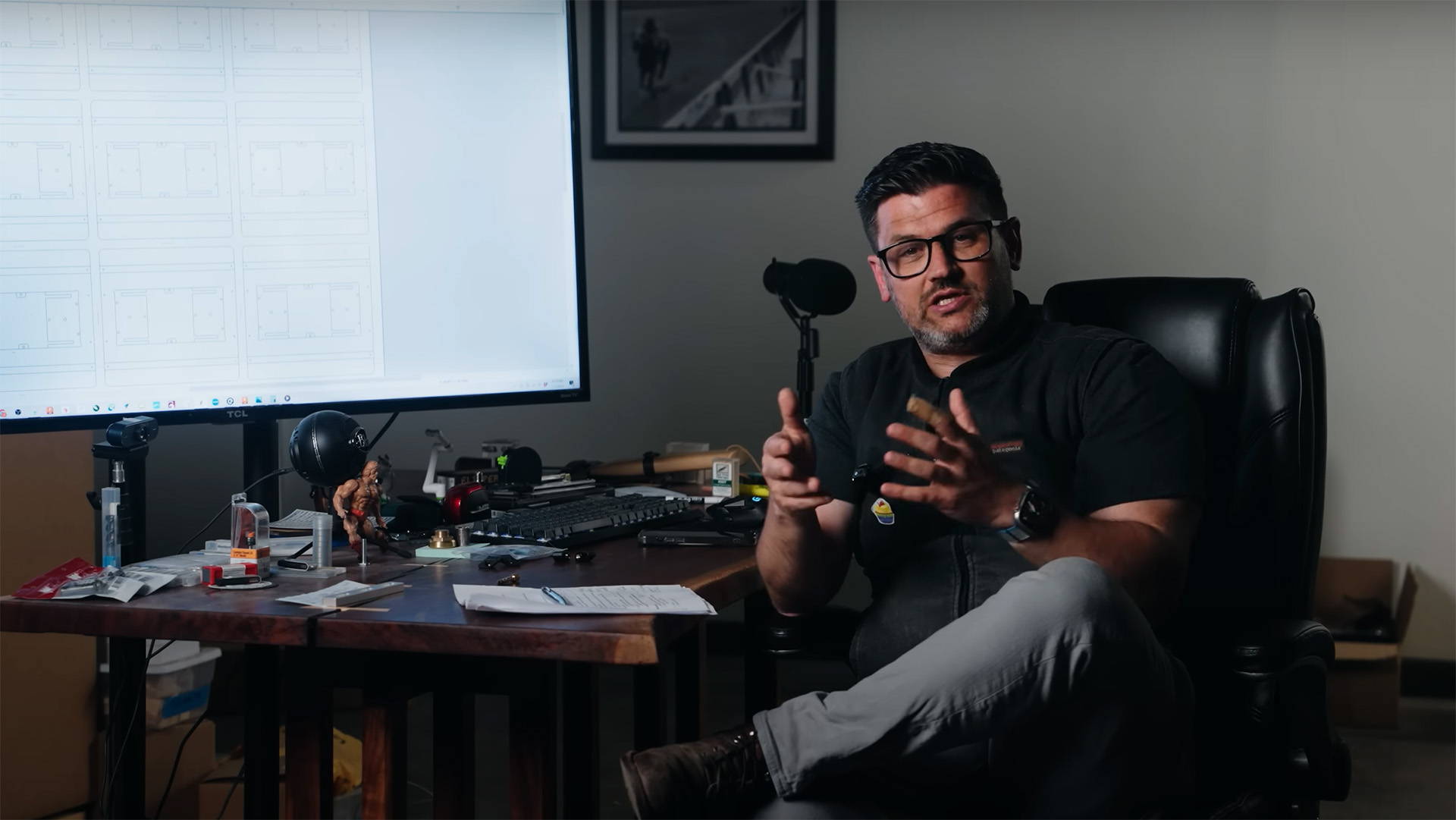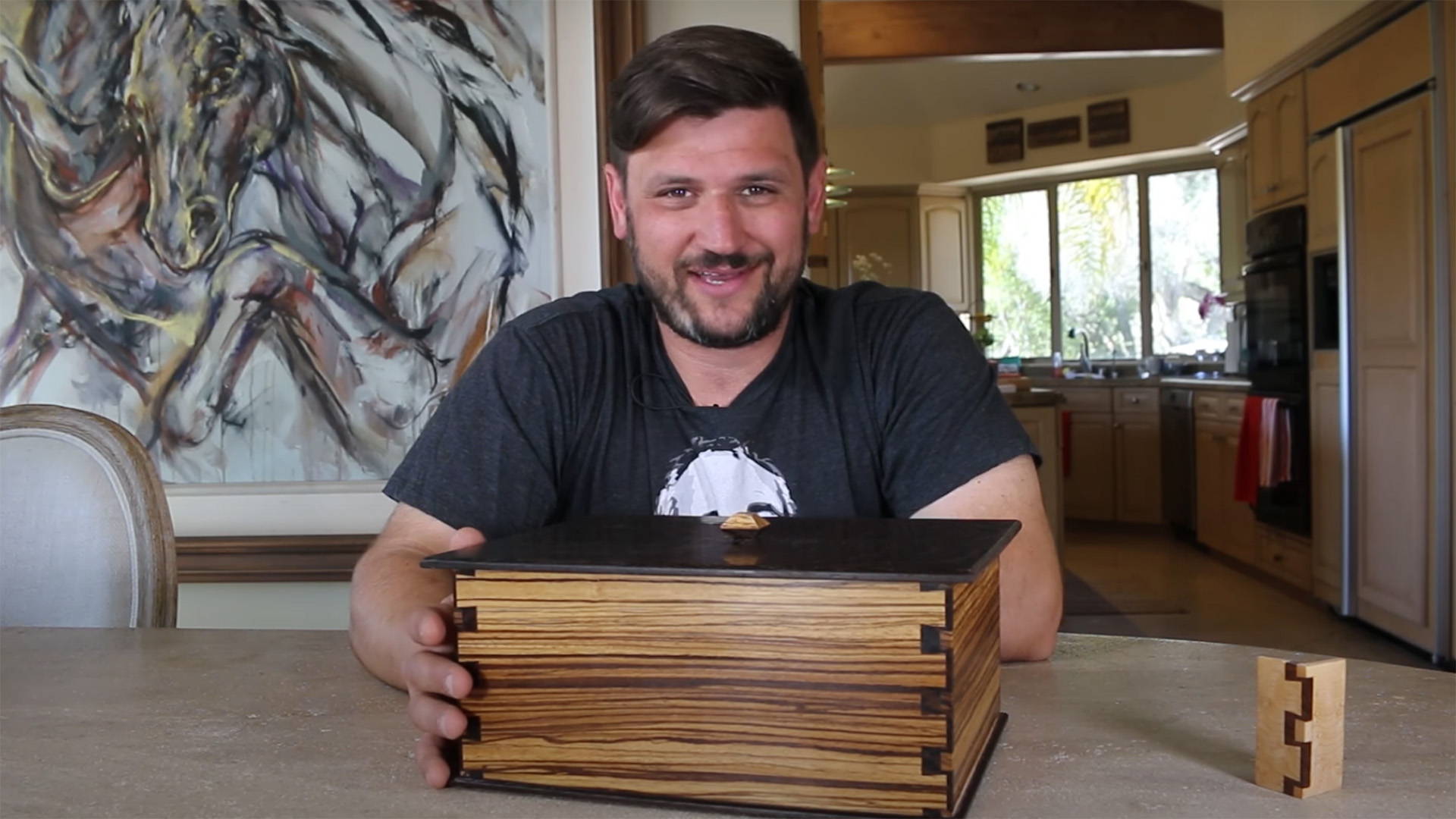When it comes to mortise and tenon joints, things are a lot more clear-cut than the whole chicken and egg debacle.
Any time you cut a hole in a board and shape another piece to fit that hole — whether it’s a mortise and tenon joint, bridle joint, or even a round tenon…
I find it best to follow a clear order of operations.
That order? Cutting the mortises first.
Here’s why.
Adjusting the size of a mortise to fit a tenon is tricky work.
It usually involves making super fine paring cuts with a chisel, which takes time.
And it’s even trickier if you’re dealing with a bridle recess or a round hole.
Resizing tenons to fit an existing mortise, on the other hand? Easy peasy.
You can use a ton of different tools for the job — from table saws to router tables to rabbeting hand planes.
If the tenon is too big, take a very small amount of material from both sides. I like to do test cuts at the tip before committing to adjusting the entire tenon.
And if your tenon is too small? No worries.
Just glue some scrap pieces of wood to the sides and shape it again. Since it’s hidden, no one will ever know.
That’s reason enough for me to always start with the mortise.
And if you’ve been doing the opposite, try it out and see if it makes your time in the shop easier.
Want to learn more about cutting mortise and tenon joints? Read this.
Do you cut mortises or tenons first? Let us know why in the comments below!
Follow us on Instagram @katzmosestools, on TikTok @katzmoseswoodworking, and check out my YouTube channel for more great woodworking content...
And as always, STAY SAFE IN THE SHOP!











9 comments
Sherwood Elkind
It depends on the type of wood. If working with Cherry, it doesn’t much matter which is cut first. If working with oak, sharpening my chisels is the first step.
It depends on the type of wood. If working with Cherry, it doesn’t much matter which is cut first. If working with oak, sharpening my chisels is the first step.
Doug
@Ken makes a good point, It seems like there are actually two questions here…
1) How do you lay out mortise & tenon joints — it would be great to hear more discussion on when and why folks prefer to start with one part or the other, and
2) Where to start when you’re doing the final fitting, here it does seem like the tenon is the place to adjust, but is that a reason to cut them second?
@Ken makes a good point, It seems like there are actually two questions here…
1) How do you lay out mortise & tenon joints — it would be great to hear more discussion on when and why folks prefer to start with one part or the other, and
2) Where to start when you’re doing the final fitting, here it does seem like the tenon is the place to adjust, but is that a reason to cut them second?
Anthony
I was taught, “create the hole, fill the hole.” Mortises always cut first for me. Yes, I error on side of oversized tenons and then shave down.
I was taught, “create the hole, fill the hole.” Mortises always cut first for me. Yes, I error on side of oversized tenons and then shave down.
Donald Kern
When I first started out, I’d cut the tenons to use as marks for the mortices. Now I cut the mortices first. It’s far easier to “sneak up” on the final tenon dimension for a perfect fit. I wish you’d been around with your advice, Jonathan, when I first started my woodshop!
When I first started out, I’d cut the tenons to use as marks for the mortices. Now I cut the mortices first. It’s far easier to “sneak up” on the final tenon dimension for a perfect fit. I wish you’d been around with your advice, Jonathan, when I first started my woodshop!
PM
I cut the mortise first. As I have progressed as a woodworker, I found that cutting the mortise first saves me time and accuracy.
I cut the mortise first. As I have progressed as a woodworker, I found that cutting the mortise first saves me time and accuracy.
Anonymous
When you cut dovetail joints, which do you cut first? The pins, right? Then you use the pins to lay out the tails that you cut to fit the pins. So, in my mind, I cut the tenons first, then lay out the mortises to fit the tenons. That’s just another way of looking at it.
When you cut dovetail joints, which do you cut first? The pins, right? Then you use the pins to lay out the tails that you cut to fit the pins. So, in my mind, I cut the tenons first, then lay out the mortises to fit the tenons. That’s just another way of looking at it.
Patrick Daniels
I spent many years cutting mortises first, but have found it simpler to cut the tennon, then use my marking knife to lay out the mortise. Working with the use of only one hand has changed my game.
Thanks for your opinion Johnathan!
I spent many years cutting mortises first, but have found it simpler to cut the tennon, then use my marking knife to lay out the mortise. Working with the use of only one hand has changed my game.
Thanks for your opinion Johnathan!
CJ
Yes- Mortise first always. And a router plane is the best tool to feather in a tenon.
Yes- Mortise first always. And a router plane is the best tool to feather in a tenon.
Ken
I will normally cut tenons first, I can then use the tenon to mark the mortise. And just because you cut the tenon first doesn’t mean you can’t make any fine adjustments required to it.
I will normally cut tenons first, I can then use the tenon to mark the mortise. And just because you cut the tenon first doesn’t mean you can’t make any fine adjustments required to it.